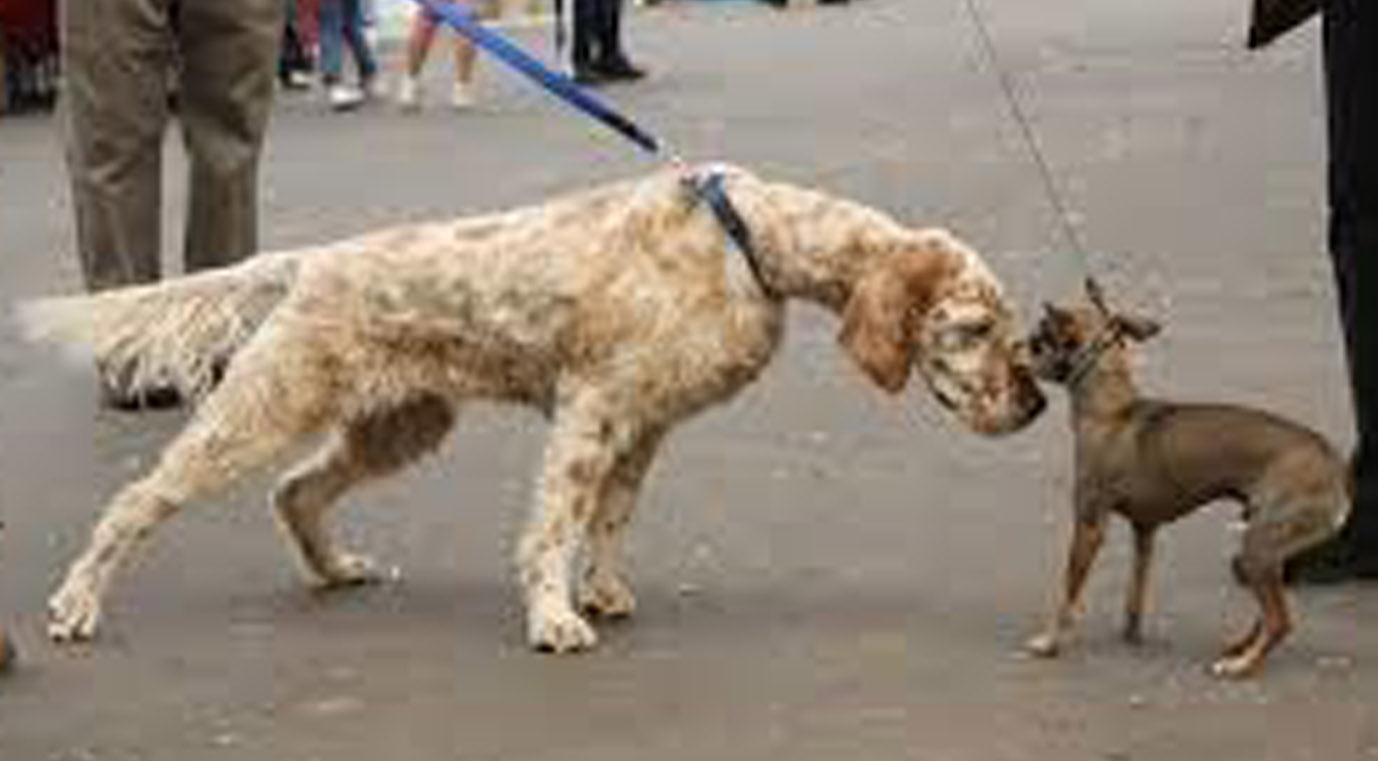
It's ok, my dog is friendly
Jul 09 , 2020
How often do we here this? "Its ok, my dog is friendly", promptly followed by some kind of negative experience for both dogs involved. “They’ve never done that before!”. Take the friendliest dog and put him/her into a situation where they feel anxious and they can and often will respond in the only way they can.
Most dog owners are not aware of the subtle forms of communication which dogs project to other dogs through body language, these days a lot of dogs don’t know how to read these signals either. This is mostly due to the fact that we have over domesticated man’s best friend and some lack the basic social skills for successful canine interactions. We often see dogs being corrected for sniffing bums and genitals, but this is a polite behaviour when greeting another dog.
Face to face meetings are stressful for the majority of dogs and these situations can, and often do, escalate into negative experiences. When we ignore, or are simply unaware of these subtle forms of body language communication we fail to protect our dogs from an uncomfortable situation and leave them with only two tools in their communication arsenal…..growl and bite. Dogs can’t write emails discussing their displeasure at being put in a situation that they aren’t comfortable with; neither can they ask for a quiet word in our ears. Remember that dogs have the cognitive skills of toddlers so if we don’t advocate for them, they are left to judge the appropriate response themselves and, much like toddlers, they tend to make poor decisions, such as shouting, hitting, biting…..sound like familiar play group behaviour? That’s because it is!
Think about when you visit the vet. There is always a dog who is over excited and ready to greet every dog who enters. This dog pulls forward to greet your dog and is now on a tight lead. “It’s ok, he only wants to say hello!” In this situation you need to be an advocate for your best friend. As owners, we are here to protect and guide them. To give them stability, confidence, respect and trust.
It’s never ok to allow two dogs to meet nose to nose, especially on tight leads. A head on meeting is very rude in the dog world and can create conflict from the outset. The posture of an over aroused dog on a tight lead often appears threatening to the other dog and can trigger defensive aggression. Again the sense of restriction can heighten this defensive urge. His/her tail is wagging, they’re happy. Not necessarily! Dogs wag their tails for a variety of reasons. We, as owners, need to understand what they are trying to communicate by wagging their tail. How is their tail positioned? How fast is it wagging? For example a low tail position wagging quickly can indicate insecurity or nervous energy which could potentially result in a defensive aggression response. A high tail position with a stiff wag often indicates over arousal and the intention to react negatively or positively.
Dogs are poor decision makers at the best of times. A stressed dog will likely make the wrong choice every time. Be aware of the overall situation and don’t allow your dog to be in a situation where they become the decision maker. Just because your dog is generally friendly, does not mean they will not respond negatively in a high intensity situation. Similarly it does not mean that all dogs you will meet will also be friendly.
Give your dog and other dogs the space and respect that they deserve in order to become comfortable in the situation that you are introducing them to. Let’s go back to the vet visit. Your dog is friendly and well socialised right? But have you considered the extra level of stress you have put on your dog simply by bringing them to the vet? Let’s be honest, a visit to the vet rarely results in pleasurable experiences. It’s highly likely that your dog is already experiencing a degree of stress. Remember, stress can come from good things like excitement as well as bad things like fear, even if your dog loves seeing the vet, they may be over aroused and over excited.
Take into consideration the, cramped reception area, the smell of a vet’s reception from a dog’s perspective. They can smell hormones excreted by other dogs who are stressed, sick and even those who have sadly died on the premises. Owners themselves will be giving off stress hormones, often we are worried or nervous about what we will find out about our pets at the vets. Maybe they can smell cats and their prey drive has been triggered. Dog behaviour is very much situational.
Every owner should be aware of basic calming signals which our dogs give us when they may be feeling uncomfortable with a situation such as lip licking, yawning and head turning. We expect a lot from our dogs in terms of their understanding of our world and what we want from them yet many of us do not take the time to understand their ways of communicating with us.
At Fur Indoors we offer help and support in helping you to understand what your dog is trying to tell you. We even run a canine body language course which provides a wealth of information and knowledge on how to be the best owner you can be.
